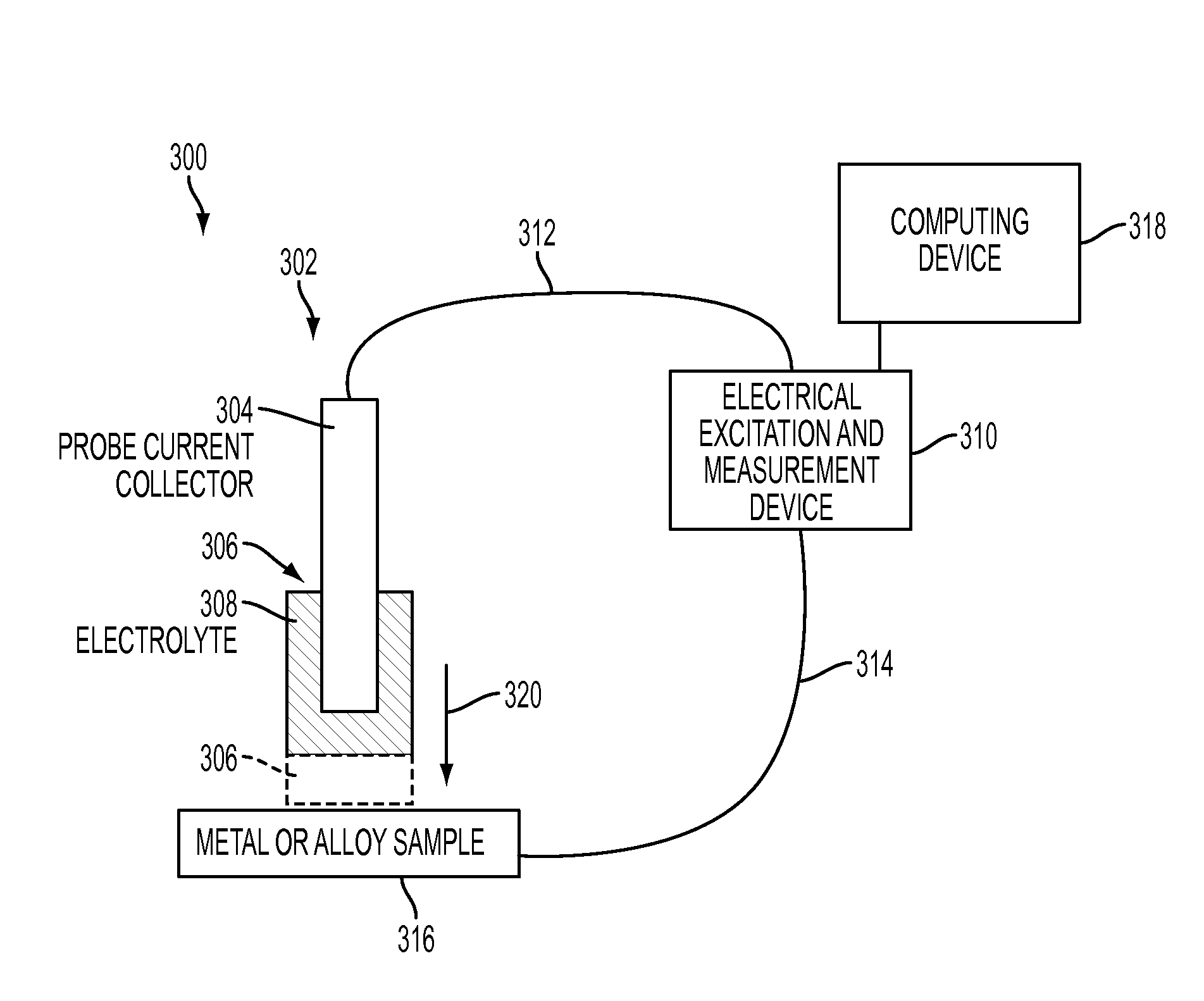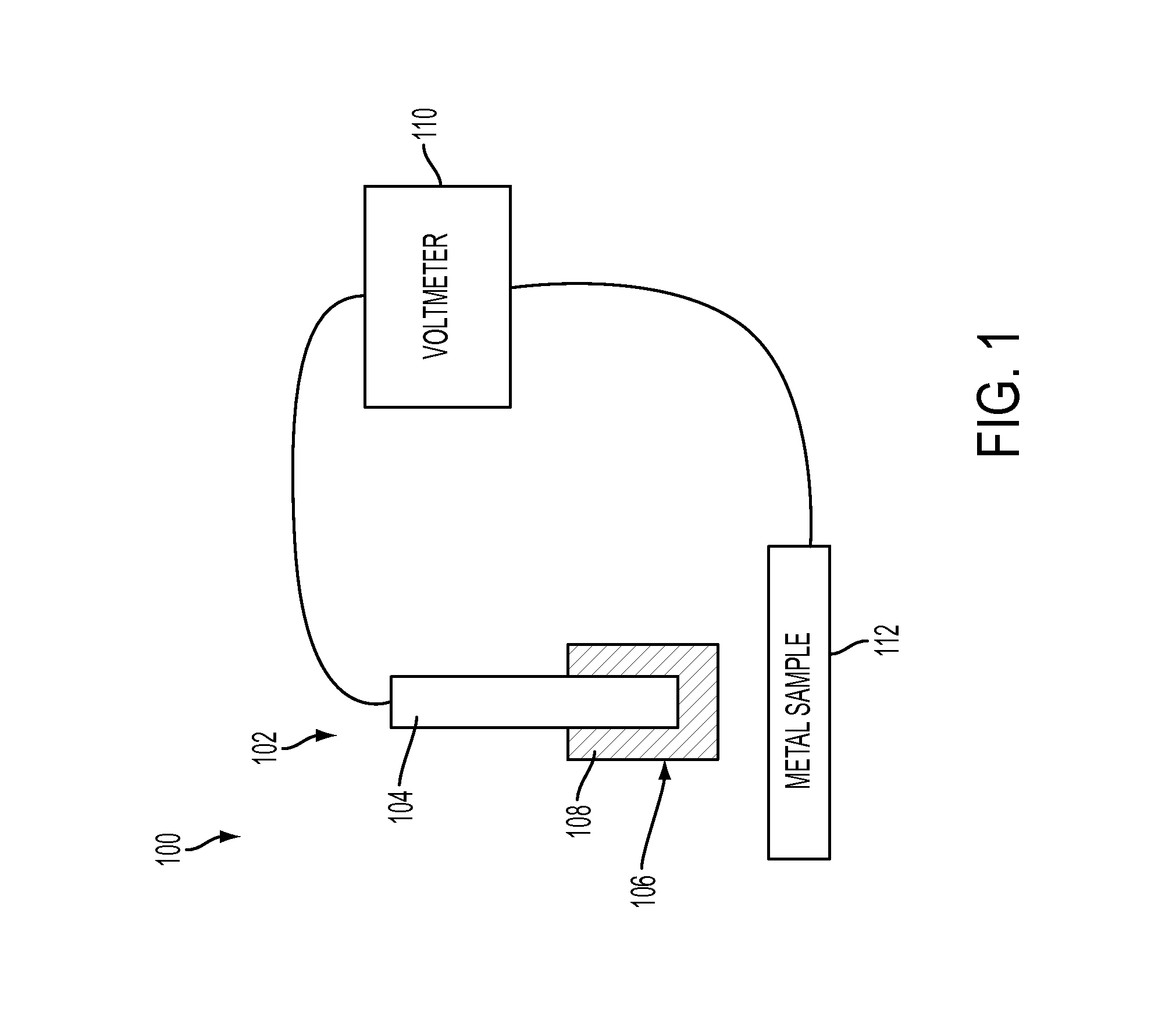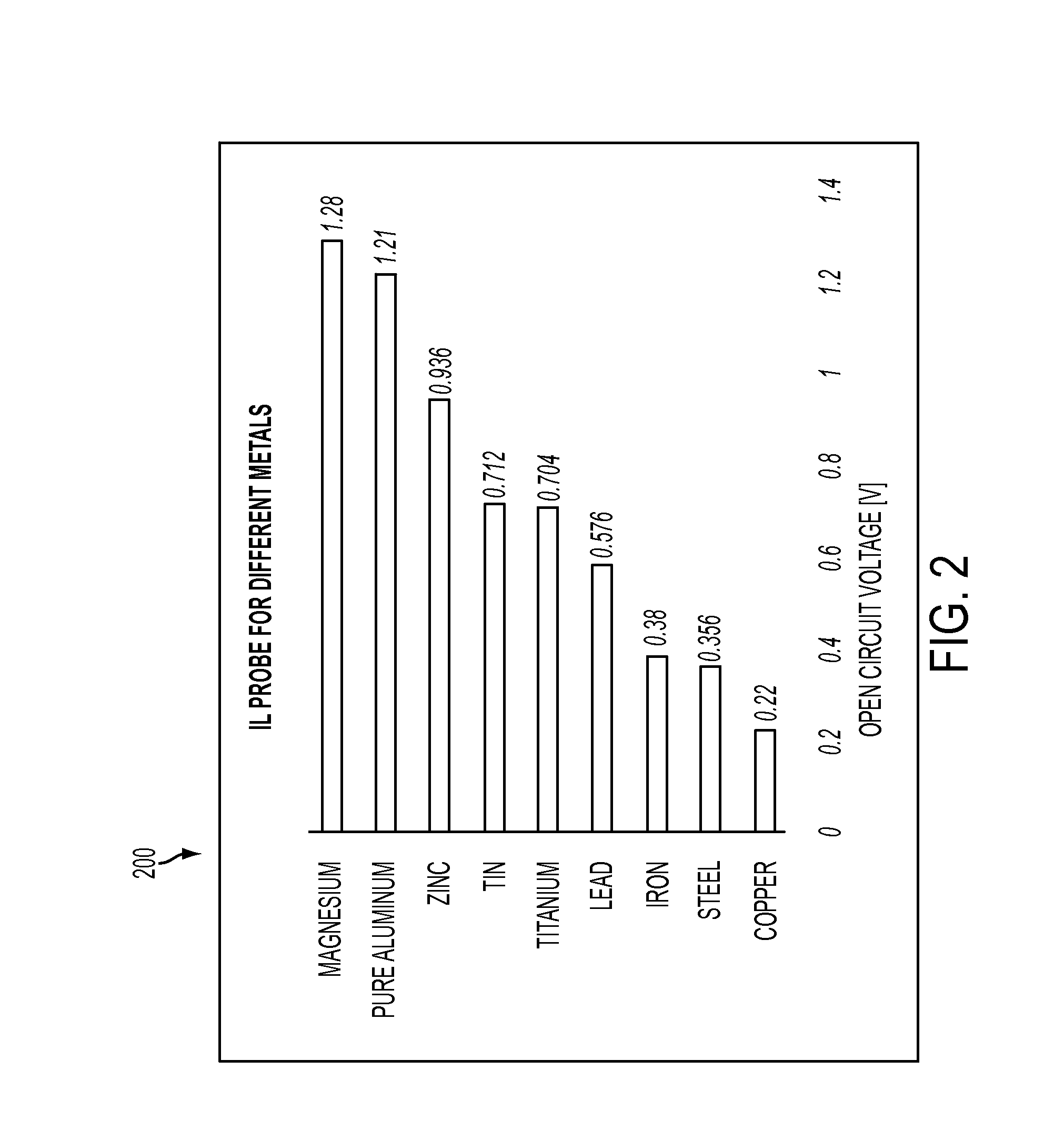Electrochemical metal and alloy detector and method
- Summary
- Abstract
- Description
- Claims
- Application Information
AI Technical Summary
Benefits of technology
Problems solved by technology
Method used
Image
Examples
Embodiment Construction
[0020]Two dissimilar conductors, such as metals or graphite, when separated by an electrolyte, which is not an electron conductor but an ionic conductor, will produce an electrochemical potential characteristic of the pair. This phenomenon is known, and theoretically can be used to identify different pure metals.
[0021]Such an arrangement 100 is shown in FIG. 1. The test system 102 of arrangement 100 includes a current collector probe 104, made out of glassy carbon, wrapped with a porous membrane 106 containing an electrolyte 108, such as 1-methyl-1-butyl-imidazolium-triflate, and an electrical measurement device 110, which in this embodiment may be a voltmeter. In operation probe 104 with membrane 106, is brought in contact with a sample 112, which is a particular type of metal, whereby the membrane 106 with electrolyte 108 is located there between. In this arrangement a potential is developed, called Open Circuit Voltage (OCV). The developed OCV is measured by the electrical measur...
PUM
 Login to View More
Login to View More Abstract
Description
Claims
Application Information
 Login to View More
Login to View More - R&D Engineer
- R&D Manager
- IP Professional
- Industry Leading Data Capabilities
- Powerful AI technology
- Patent DNA Extraction
Browse by: Latest US Patents, China's latest patents, Technical Efficacy Thesaurus, Application Domain, Technology Topic, Popular Technical Reports.
© 2024 PatSnap. All rights reserved.Legal|Privacy policy|Modern Slavery Act Transparency Statement|Sitemap|About US| Contact US: help@patsnap.com










